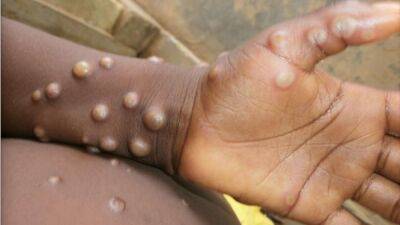Monkeypox: What we know about the smallpox-like virus detected in the UK
Health authorities in the UK have confirmed a case of monkeypox - a rare viral infection related to smallpox - in a person who recently flew in from Nigeria.
The patient is receiving specialist care in an isolation unit at Guy’s and St Thomas’ infectious disease hospital unit in London, the UK Health Security Agency (UKHSA) said on Saturday.
The UKHSA didn’t release any details about the person’s sex or age but said it was working to identify anyone who has been in close contact with the infected patient, including people who travelled on the same flight.
Monkeypox is a relative of smallpox, a disease which was eradicated in 1980, but is less transmissible, causes milder symptoms and is less deadly.
The illness typically lasts for two to four weeks and symptoms can appear anywhere from five to 21 days after infection.
Monkeypox symptoms usually begin with a mix of fever, headaches, muscle aches, backache, chills, exhaustion, and swollen lymph nodes.
This latter symptom is typically what helps doctors distinguish monkeypox from chickenpox or smallpox, according to the World Health Organization (WHO).
Once you have a fever, the key feature of monkeypox, a nasty rash, tends to develop one to three days later, often starting on the face and then spreading to other parts of the body.
The number of lesions may range from a few to thousands.
The lesions will go through an ugly ripening process, from macules (flat lesions) to papules (raised lesions), vesicles (fluid-filled lesions), then pustules (pus-filled lesions) and then finally scabs (crusty lesions) before eventually falling off.
Monkeypox virus belongs to the Orthopoxvirus genus in the family Poxviridae. It was first discovered in 1958 when two outbreaks of a pox-like disease








